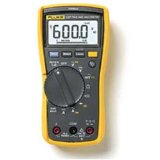

Search This Site
Search With Google
Building Inspections Are A Must
Examples Of The Building Moisture Meter
Building Moisture Meter
When it comes to checking over a home or building there are potentially thousands of defects that can be found. A thorough and professional building inspection will uncover most of these defects if they are present in a particular building. We shall concentrate on the most common building defects for the purpose of this site, for which many of them can be tested and discovered using a moisture meter. Whilst this site is primarily about the moisture meter, we will still note the common defects that can be found in a building without the use of a moisture meter. This is for those of you that are carrying out inspections on your own home or building and we hope that it helps you.
Slab Edge Wetting
This symptom is where the horizontal ingress of moisture and salt in solution form leave the soil and enter the footing edges of the concrete. It can be caused by poor cement concrete, the membrane edge being pushed down before the concrete is poured and concrete over pour. Damage caused by this can be serious and problems that usually occur are mould and rotting. The salt will also work on the cement which will cause concrete fretting. Internal floor coverings will show signs of moisture problems. You can locate any moisture content using a moisture meter and testing the concrete sub floor and act accordingly.
Rising Damp
This is a problem experienced by many a building. It is where the damp course is broken down by water and salt and the moisture rises up through a masonry wall. One can test a wall for dampness with a building moisture meter and treat it if so desired. Rising damp is very slow to act and generally is limited to mortar joint erosion. Keeping an eye on the situation is advised and in many cases just re pointing the joints is sufficient. It could of taken anything up to 50 years for the mortar to erode.
Brick Growth
When looking at a brick wall on a building you may see vertical cracks at the end of a wall. Certain bricks such as clay bricks are porous. This means that they will continually absorb moisture from their environment and expand in size as they do so. If there are no control joints in the building wall then cracking will occur due to compression factors. Bricks can be tested for moisture content with the moisture meter. If you do have certain bricks which are continually wet you could chisel them out with a bolster and hammer and replace them with a better and more functional brick.
Roof Tiles
Roof tiles, especially fired clay tiles, will fret if they are exposed to moisture for a long period of time. The fretting is usually pin pointed to the laps of the roof tile. In seaside areas salt also will have an adverse effect on the roof tile. Sadly it is just a way of life. Roof tiles will become brittle and crack over time. You can check all your roof tiles for moisture content with the moisture meter. Tiles that are fretting due to moisture content need to be replaced as soon as you can do it.
Tree Damage
If a tree falls during a storm on to your home, the tree damage is obvious. However tree root damage is not so obvious. It happens over many years and a building can actually be moved by tree roots. Most tree damage is due to the tree taking moisture from the surrounding soil. This causes the soil to contract and buildings to move or drop. If you have any trees near to the base of a wall you need to move or remove it. This is particularly so with large trees. If it is not possible to move the tree then an impermeable root fabric should be used to prevent the tree roots from growing under a building. You will know if a tree is a potential hazard to your building by testing the soil for moisture levels in the surrounding area. Your moisture meter will inform you if the soil is too dry.
Storm Water
When gutters and down pipes overflow or leak the soil around and under the footing will get saturated. Once the soil reaches saturation point it will not be able to take anymore water and simply collapse. This can lead to a building moving or dropping. With reactive soils they will expand which will lead to cracking in walls. A solution to prevent this is to have sufficient paving around the external perimeter of a building. This will prevent excess water build up in the soil. Expanding and collapsing soil can have serious consequences on any building.
Building Movement
To control movement in any building is hard to do. Cracks in walls are usually caused by changes in moisture content in the soil around the footings. Horizontal cracks are caused by walls dropping. The most common form of crack is the diagonal crack heading away from window and door frames. These tend to occur if a footing drops on one side.
Roof Frames
Roof frames can suffer by not being able to take the weight of the roof. This is particularly so with roof frames that do not have purlins or struts. The frame can sag and split. You need to replace split wood and add additional support if you experience this. Rotting roof frames will eventually give. Any wooden frame can have rot set in if the moisture content in the timber is too high. Testing a wooden roof frame can be carried out using a wood moisture meter.
Building Wiring
Old style wiring that uses canvas coated and vulcanised rubber power cables needs to be replaced. Rodents can eat the canvas and if they do not get the canvas then age will. Any exposed wires can be a fire hazard.
Leaking Pipes
This can be a real issue with lead or galvanised steel pipes. These pipes can be under floor slabs and corrode causing leaks. The sub floor can even be washed away in severe situations. This can prove to be a very expensive repair especially if the pipes are cast in to the concrete slabs which was a popular practice. When a pipe leaks it begins slowly and builds up. So any leakage may not be noticed for some time. Unfortunately when the leak is eventually noticed the damage has already been done. By checking the concrete slabs on a regular basis in your floor with a moisture meter can alert you to any water or moisture issues that are going on there.
Poor Workmanship
Poor workmanship results in many building and home problems and defects. A couple of examples are mentioned below. With plastering when a plasterer does not strike a horizontal line through the render. This can result in moisture rising up in to a wall.
Testing plaster with a moisture meter can alert you to this. Concrete slabs poured up against a wall. This can cause brick fretting. Using unsuitably moist timber in important structural work. Wood must be tested for moisture levels to ensure that it is suitable for use.
There are so many building and house problems caused by moisture and changes in moisture levels. This can be inside the building or in the soil around the footings of any building. Though we need water to survive, it can prove to be a real nuisance in many cases. Thankfully moisture problems can be cured and even prevented with the correct procedures and equipment such as the moisture meter.
If you are experiencing any of the above problems in your home or building we have found a website that deals and advises with many building and building repair issues. For a comprehensive and informative site on building issues check out Ask The Builder.
Moisture Meter Guide
The complete moisture meter website
When it comes to testing the home or any building for moisture content a good quality moisture meter is an essential item. Any professional building inspector will test for moisture levels in a variety of surfaces and sub surfaces. Now a wood moisture meter can indeed be used to test other materials with similar densities as can a concrete moisture meter be used to test any concrete flooring and other concrete items. However to fully test a building a moisture meter needs to be versatile. A building inspector moisture meter can be used to test a multitude of materials such as sheer rock, ceramic tiles, wood, plaster roofing to name a few. The building inspector moisture meter can be either a pin or pin less version. The pin less version can test any existing structures without causing any damage. Because the building inspector moisture meter can take moisture readings from a multitude of materials it tends to give a relative or comparative reading that will help the user identify any moisture problems in that particular building if there are any.
Purchasing a new home is generally the biggest financial commitment anyone will make and it is right to carry out surveys and tests to ensure that your investment is to the highest standard. And just as importantly is to test the building to discover any problems within it and it’s structure. Moisture can run havoc in a building, causing severe damage and resulting in huge building and repair costs. By hiring someone to test the building or even going over it yourself with a moisture meter can save thousands in extreme cases. So when buying a new home always have a professional survey done, in particular the search for any water or moisture damage.
Moisture Meter Guide 2010 Contact details:garnett65@hotmail.com
Wagner BI2200 Moisture Meter
This particular building inspector moisture meter from Wagner is a non intrusive version. It is very easy to use and can be used on a wide variety of materials in the home or any building. It does give only a relative reading on moisture content. Once a dry baseline reading has been established this moisture meter can pin point any moisture problems. It is versatile and easily programmable for all the materials it has been designed to test with. It does not damage any surfaces. Features include: digital display, pin less, hold feature. Teflon sensor and relative readings.
Delmhorst P-
This is a pin type building inspector moisture meter. It has been designed to test for moisture content in fibrous materials which makes it ideal for testing around homes and buildings. The probes on this particular instrument can work at depths of an inch and there is an external connector that can be used in conjunction with this moisture meter. The readings are shown on a digital display and there is an arbitrary scale so the user can compare moisture content readings on a variety of materials. Features include; pin meter, digital display, depth measurement. Average and high readings.
When you buy a car you have it checked over by a friend with mechanical knowledge or a professional mechanic who offers his services. Now a house is by far a larger investment than a car and amazingly many do not have a professional property inspection carried out before they buy a house. We find this amazingly bizarre and quite staggering.
A property inspection will involve a professional property inspector going through the building in search of defects and structural problems. Common problems can include water damage, insect infestation and other such wallet busting problems. Water and moisture though can cause the most detrimental of problems. Such things as timber decay, sub floor moisture levels, cracked bricks and walls can all of been caused by excessive moisture. The building inspector will check for all these problems and their symptoms with a moisture meter. Without a thorough test you are playing Russian roulette with your wallet and investment. Even if you do not hire a building inspector you must go around any home or building yourself with a moisture meter to see if there are any underlying issues that need to be attended to.
So if you are planning on buying a new home, do hire a building inspector before committing to the property and purchasing it. Any problems found can also be used and a negotiating tool to further lower the price of the building. Quality building inspectors will also take other tests as well as a thorough moisture test. These tests will include insect damage and infestation. Their tools of the trade include the moisture meter, listening devices and thermal cameras.
Things you can check yourself before buying a house are to see if there is moisture or mould on the walls or ceilings. If the paintwork is flaking or there is rotting timber present, then there could indeed be a moisture problem. Any cracks in brickwork and walls could also point to a moisture problem. The signs are visible but for confirmation one needs a moisture meter to test correctly. Remember, moisture costs money!
Uses For The Moisture Meter In Buildings
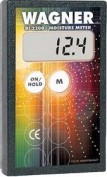

The building moisture meter has been designed to test a variety of materials throughout the home for moisture content. These materials can include roofing tiles, insulation, siding, drywall, plaster and timber. Mould, rot and decay are the usual symptoms of moisture problems and these can prove to be both hazardous and cause structural problems in the home. By using a moisture meter it is possible to detect moisture issues that would otherwise of not been noticed.
The moisture meter can be useful in determining whether a material is moist enough for mould to grow and thrive. Mould can accumulate on materials that have a 20% or so moisture content. As well as checking materials to see if they have excess moisture, the moisture meter can also test a material to see if it is dry. This is particularly useful when you are going to be doing a lot of testing. If you locate a material that is dry it can be used as a baseline in which to compare all other materials.
The moisture meter can prove to be particularly useful within the home. If you are planning on buying a new house you can check it for any leaks in any pipes, ensure that all the timber in the house in is good condition and check all internal walls as well. If you are unfortunate enough to be affected by flooding at some time then the moisture meter can be used to test and see if the house is inhabitable again.
The building moisture meter comes in 2 variants. They are the pin and pin less versions. Each particular instrument has it’s own advantages and disadvantages and uses for different applications. The pin type is used to measure surface moisture as well as depth moisture using electrical conductivity. This proves to be a repeatable method and extremely accurate. The pins on these moisture meters can be of varying lengths. They are metallic with sensitive tips and need to be inserted in a material in order to obtain a reading.
Pin less building moisture meters are used to test moisture levels beneath the surface of a material. They use electromagnetic force and can detect changes in the characteristics of returned emissions and then calculate a moisture content. The depth that these meters can operate at varies between each individual model and are unaffected by surface moisture. The results they give is a relative value. They prove their worth when it comes to testing showers and baths. They also work well in detecting leaks from kitchen items such as the dishwasher. Water can affect any floor whether it be absorbed or emitted. So the pin less meter is a necessity when it comes to testing flooring within the home. The only issue one needs to be aware of with these pin less moisture meters is that they can give a false reading if metal is present. Such things as copper wire and piping can easily affect it.
The building moisture meter is a great accessory to have whether you be a professional builder or an avid DIY enthusiast. They are designed to test a vast range of materials in the home and at times can prove to be invaluable. Buying a moisture meter is not an expense. It is an investment that you will revert back to time after time.
To Care Is To Share
Moisture Meter Brands On This Site




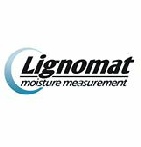




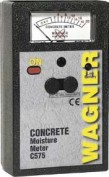


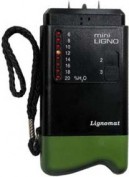
Wagner Moisture Meters
Delmhorst P-
General Tools MMD5NP Pinless LCD
General Tools MMD7003 Precision
General Tools MMD8P Multi Species
General Tools MM700D Precision
Extech MO210 Pocket Moisture Meter
Condensation
This is damp from the air. Basically it is warm air which contains water vapour being cooled. This can happen from coming in to contact with a colder surface or losing > Condensation
Rising Damp
Rising damp is caused by ground moisture rising up in to floors and walls of your home. This moisture will continue rising up on its journey until it evaporates or > Rising damp
Wet Rot
Despite the fact that wet rot is not as hard to eradicate as dry rot, it does occur more in buildings than dry rot. Wet rot can cause you severe problems and damage in your home. Wet rot
Dry Rot
Unfortunately dry rot is one of the most damaging conditions you can have in your building. In order for dry rot to flourish it requires moisture. This moisture can come from many different sources in the home. Dry rot
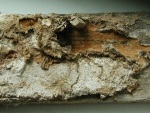

Building Mold
Basically moulds are fungi which are a common group or organisms that also include yeasts and mushrooms. Moulds are usually found out in nature but can be carried to the indoors from the outdoors. To date more than 270 species of mould have been found and identified in people’s homes. The usual places molds are found in the home are in damp areas where moisture has affected the area. Such instances include in wallpaper, tiles, carpets, wood and insulation materials. This is why it is important to always be aware of moisture in the home and carry out spot checks once in a while with a building moisture meter. Building mold
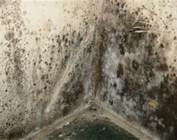
Damp From Floors And Walls Drying Out
Basically caused by moisture content within the structure of your home working itself out from the structure. This type of damp can take months and even years to dry fully. This is because hot air dryers will only dry the moisture content close up to the surface of a material. Floor damp
Penetrating Damp
Penetrating damp is where damp from the rain or damp from the ground enters the walls of your home. It is basically caused by the moisture that enters your home does not have an escape route to follow. Penetrating damp
Chemical Damp
Chemical damp is basically caused from salt contamination. When plaster is contaminated by hygroscopic salts these salts will absorb moisture from the air. Chemical damp
Damp From Plumbing Leaks
These damps are caused by corrosion of the plumbing and plumbing joints in your home. The pipes can corrode internally over time because the pipes are made using different types of metal. Plumbing leak damp
Summary Of The Building Moisture Meter
| Tramex Moisture Encounter Plus |
| Tramex Compact Wood Moisture Meter |
| Tramex Concrete Encounter Moisture Meter |
| Tramex Skipper Plus Moisture Meter |
| Tramex Roof And Wall Moisture Scanner |
| Sonin Digital Moisture Meter model 50218 |
| Sonin Digital Moisture Meter 270 model 50270 |
| Sonin Moisture Test Tool model 50210 |
| Sonin Moisture Test Meter Model 50211 |
| Oak |
| Douglas Fir |
| Beech Tree |
| Elm Tree |
| Hickory Tree |
| Maple Tree |
| Pine Tree |
| Prevent And Repair Gaps In Wooden Floorboards |
| How To Fix A Squeaky Hardwood Floor |
| How To Repair A Hardwood Floor That Has Buckled |
| Which Is The Best Firewood? |
| Concrete |
| Concrete Moisture |
| Screed Moisture Meter |
| SDS Drill |
| Belle Cement Mixer |
| SDS Drill Advice |
| Which SDS Drill |
| SDS Drill Accessories |
| Drilling Into Concrete |
| Kennedy Tool Box |
| Moisture - Basic Facts |
| Types Of Damp |
| Wet Rot |
| Dry Rot |
| Mold |
| Water Leak Detection |
| Stucco Moisture |
| Water Damage |
| Moisture And Rust |
| Moisture Damage To A Chimney |
| Wallpaper Stripper |
| Plaster Mixer |
| Why Worry About Moisture Problems |
| Does Your Home Have A Moisture Problem? |
| How To Solve Moisture Problems |
| How To Use Anti Mold Paint |
| Rising Damp |
| Condensation |
| Salt Damp |
| How To Avoid Bathroom Condensation |
| How To Remove Black Mold |
| How To Prevent Bathroom Mold |
| Soldering Kit |
| Soldering Kit Contents |
| Soldering Kit Advice |
| Bonsai Tree Classification |
| Growing Bonsai From Seed |
| Bonsai Tree Care |
| Bonsai Tree Training |
| Bonsai Tools |
| Displaying Bonsai |
| Bonsai Calendar |
| Bonsai Plants |
| The Thirsty Light Curve Moisture Meter |
| The Thirsty Light Ladybird Moisture Meter |
| The Thirsty Light Bumble Bee Moisture Meter |
| The Thirsty Light Butterfly Moisture Meter |
| Hanna Instruments |
| Agratronix Portable Coffee Moisture Tester |
| Lawn Aerator |
| Lawn Roller |
| Lawn Rake |
| Lawn Sand |
| Chainshot |
| Chainsaw Gloves |
| Chainsaw Trousers |
| Chainsaw Boots |
| Mac 4 - 20 XT Chainsaw |
| Mac 738 Chainsaw |
| Mac 842 Chainsaw |
| Mac 20X Power Chainsaw |
| Einhell BG-PC 3735 Chainsaw |
| Einhell BG-PC 4040 Chainsaw |
| Einhell BG-PC 5045 Chainsaw |
| Poulan P3314 Chainsaw |
| Poulan P4018 Chainsaw |
| Poulan Pro PP3816AV Chainsaw |
| Poulan Pro PP4218AVX Chainsaw |
| Poulan Pro PP4620AVX Chainsaw |
| Efco MT 4100 SP Chainsaw |
| Efco MT 3500 Chainsaw |
| Efco 132 S Chainsaw |
| Efco 147 Chainsaw |
| Efco 152 Chainsaw |
| Efco MT 7200 Chainsaw |
| Efco MT 8200 Chainsaw |
| Efco MT 3750 Chainsaw |
| Methods Of Obtaining Soil Moisture Levels |
| Hygrometer |
| Psychrometer |
| Rain Gauge |
| Wave Ventilation System |
| Humidity |
| Hygrometer For Keeping Reptiles |
| Humidor |
| Weather Stations |
| Musical Instrument Storage |